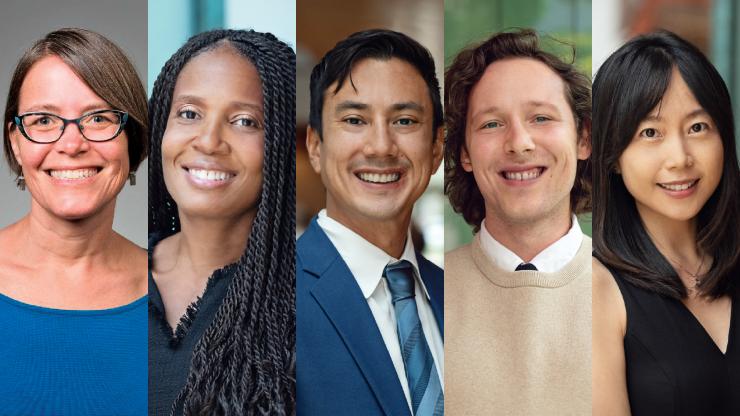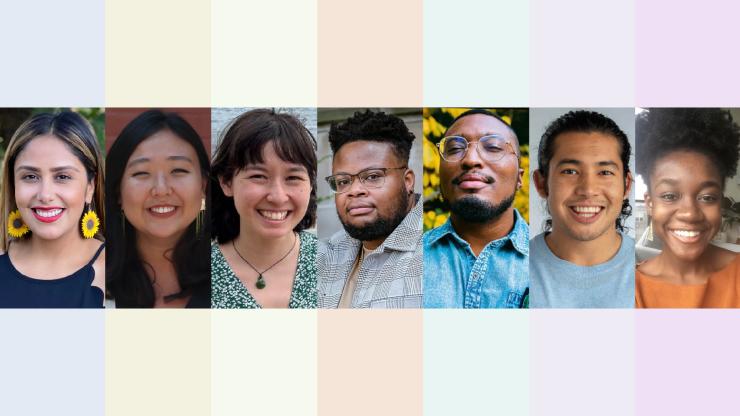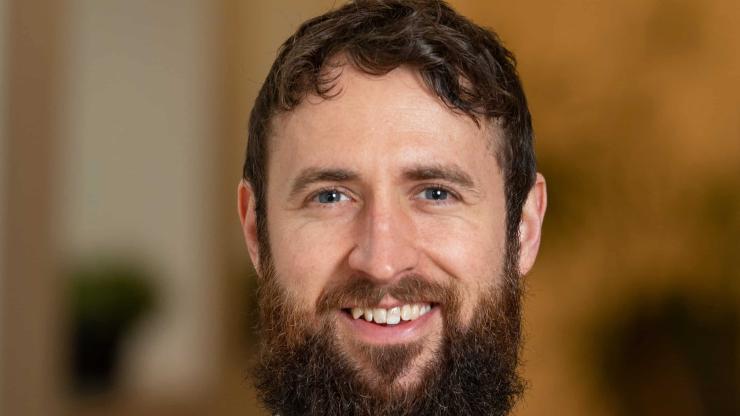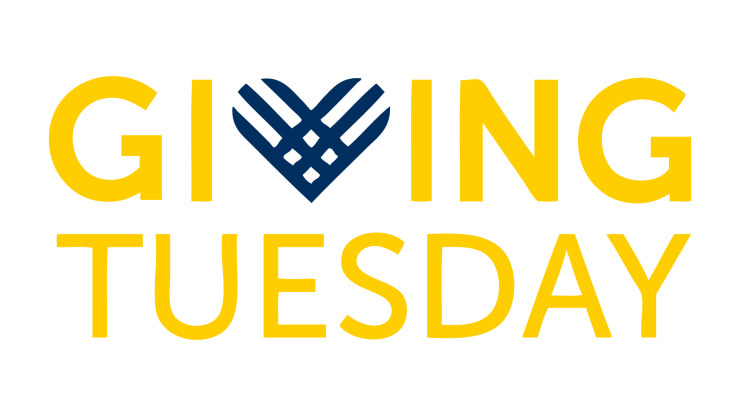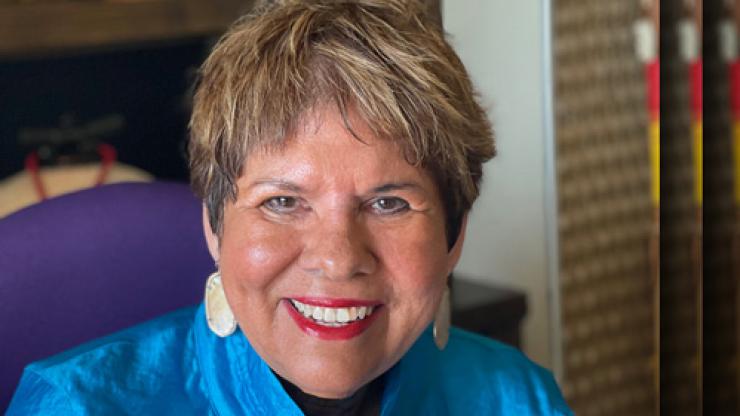What Open-source Textbooks Could Mean for Teaching Mathematics in College
Vilma Mesa and her team of researchers investigate the power of asking interactive questions
What is a good question?
Recently Dr. Vilma Mesa and her research team were thinking this over in the context of math textbooks. Nearly the whole team agreed that a good question is one everyone gets right. Mesa sat with that for a moment, then disagreed.
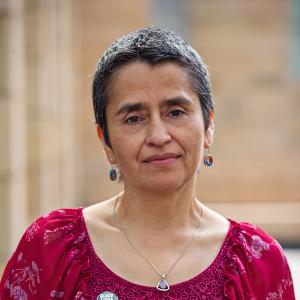
“A good question is one that gives me responses—responses that allow me to see how people are thinking about the ideas,” says Mesa. After all, the School of Education professor of education and College of Literature, Science, and the Arts professor of mathematics is interested in how people think. Specifically, how mathematics students think.
Since 2016, as part of the Undergraduate Teaching in Mathematics with Open Software and Textbooks (UTMOST) Project funded by the National Science Foundation, Mesa has been investigating how the use of open-source textbooks written in a language called PreTeXt can improve the way postsecondary educators teach math. Available online, open-source textbooks are covered by an open copyright license, making them free to students, teachers, and members of the public.
PreTeXt is an authoring and publishing system for authors of textbooks, research articles, and monographs that is especially used in STEM disciplines. Open-source textbooks written in PreTeXt are entirely customizable—giving faculty the freedom to enter, answer, and change questions, and gather responses from students. The software can even facilitate learning in other languages. Mesa relates that one of the authors in the project found a Spanish translation of a textbook he had written. Because the book had been written in PreTeXt, a professor at the University of Chile was able to translate it for use in his own classroom. The language also enables teachers to place interactive questions in their textbooks, which in turn can make it easier for them to see how their students are understanding the material. When students answer questions, the teacher sees their responses immediately. Most importantly, teachers can better understand how their students are thinking about the questions posed. With an understanding of how students are grappling with the concepts in the book, teachers can theoretically tailor their instruction to better serve their classes—but that remains to be seen.
“One of the things we want to know is whether faculty can see the advantages and if they will be more inclined to start using that information to do something different in the classroom,” says Mesa. She notes that math faculty regularly complain that their students never read their textbooks before coming to class, but after analyzing student responses, Mesa says that’s not the case. “We had over 1,200 students in our sample of survey respondents and the number of people who say that they don’t read the book is very small. What does it take for faculty to actually look at the data [gathered from an interactive text] and say, ‘Oh, maybe I need to do something differently.’”
As Mesa’s team analyzes the data from those 1200 students, they are looking at all the different ways the students responded to a particular question. The team also shares this information with the students’ instructors. One teacher, whose class was taught entirely as a lecture when Mesa observed it, was so excited by the student responses, he immediately began thinking of other questions he would like to pose to his class. “I didn’t realize they were thinking about the content in this way,” he told Mesa. The students’ responses prompted the teachers to do things they had never done before, like generate discussions among the students about ideas that were presented in the questions.
Mesa has long been interested in the act of writing textbooks: how they organize information, and how they can be improved. While working on her dissertation, she examined textbooks from different countries. Although most were similar, a few were quite different—some were not textbooks but workbooks, others used cartoon characters to show how students could reason out the problems. She was curious about concepts that were presented differently than they had been when she was growing up in Colombia, or the ones that are commonly used in the U.S
“It also interests me how the knowledge is conveyed,” says Mesa. “What are the assumptions that are made about knowledge, and about the reader? Who is the imagined person who will be reading the textbook or working with the textbook? In postsecondary education, the textbooks are mostly written for the students, even though it’s the teachers that use them the most. It’s a very interesting duality. It seems to me, most of the time, this ideal reader does not exist, or that teachers are trying to create that ideal reader based on the books that a certain person wrote.”
Lack of student feedback is part of the reason it is hard to write good textbooks, notes Mesa. A traditional textbook might be 400 pages long.
“It’s so much content,” she says. “You have to cover those 400 pages in a semester. The kinds of connections that are going to happen over those 400 pages—nobody has time. I can see computers helping us do that by accumulating data. If groups of researchers gather around those data points and find patterns in student responses, they might say ‘Ask a question here. Next week, ask that question. Let’s see what happens.’”
Open-source textbooks have the potential to enable a new method of responsive teaching, but they also address an equity issue, plain and simple.
“They’re free, for God’s sake!” says Mesa, who remembers xeroxing pirated copies of textbooks for a tenth of their cost when she was a student herself. “In terms of democratizing access to knowledge, that is one of the driving forces behind open-source books.” Furthermore, because they are digital, open-source textbooks can be accessed by students on any device. The sample of 1,200 students that Mesa’s research team is analyzing indicates that students may have used their phones more often to access their textbooks. There is also evidence that students interacted with the material on more than one device to complete their work.
In the long term, Mesa dreams of an automatic classification of student responses that would give instructors information that, for example, half of the students are thinking about a notion in one way, a third are thinking about it in another, and the rest are getting confused in a different way. The system would then prompt the teacher to introduce an activity in class that would support all three types of students in furthering their understanding of the concept.
For the next phase of her research, Mesa hopes to apply the same method of interactive questioning to a large subscription course taught by a group of faculty in the same department. Together, they can look at the responses, and then propose questions and activities to advance their students’ learning. For now, her study is in the early stages of development. As she continues her investigation, Mesa hopes to better understand what it will take for faculty to use the information that can be garnered from asking good questions to better serve their students.
“I imagine that the availability of this information may turn off some people, but it may be very exciting to other people. I don’t presume that this is going to revolutionize everything,” says Mesa, but over time, she hopes that the collected data will help move the needle in the way we think about teaching math.
